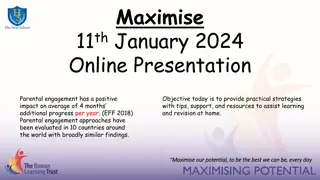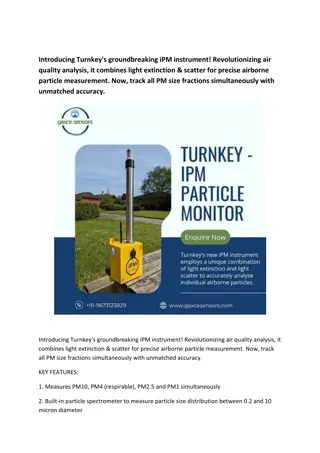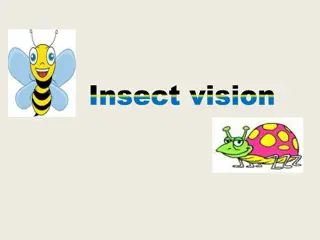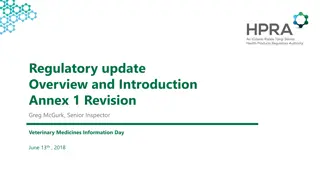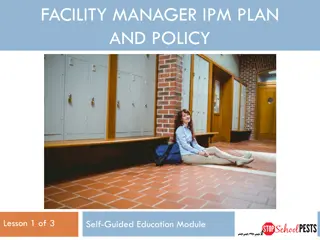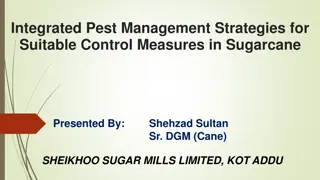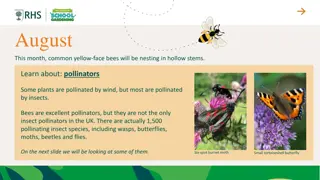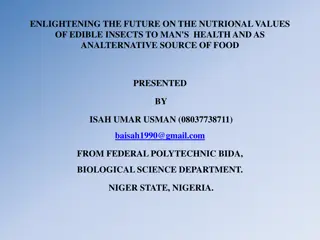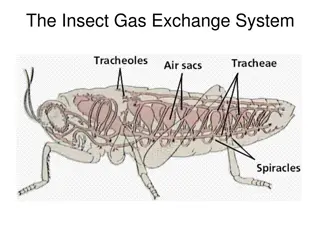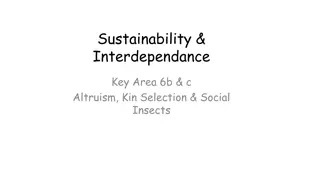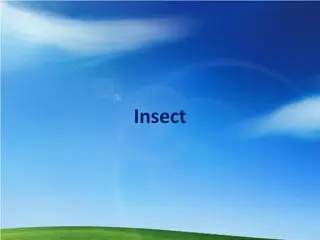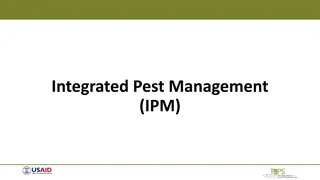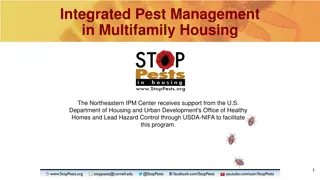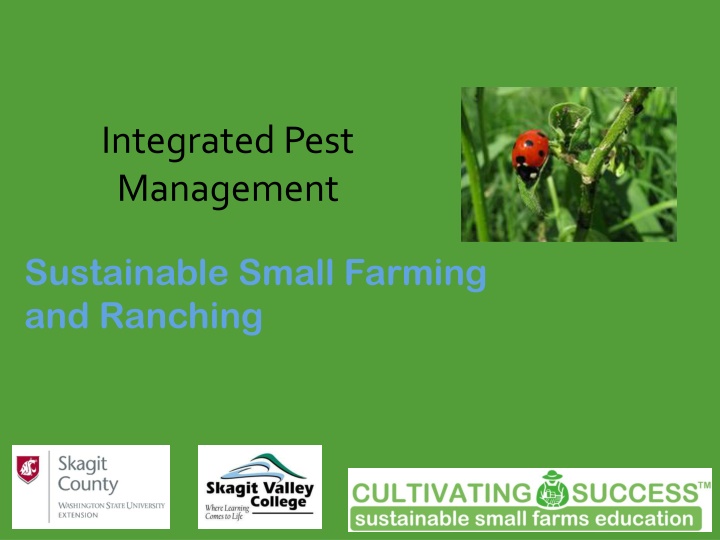
Integrated Pest Management for Sustainable Farming and Ranching
Integrated Pest Management (IPM) is a sustainable approach that combines Prevention, Avoidance, Monitoring, and Suppression (PAMS) strategies to control insect pest populations effectively while minimizing economic, health, and environmental risks. This comprehensive system integrates various compatible control strategies, including practices such as prevention, avoidance, monitoring, and suppression techniques like biological controls and cultural practices. By following IPM methods, farmers and ranchers can effectively manage pest populations while reducing reliance on harmful pesticides and promoting a more sustainable agricultural environment.
Download Presentation

Please find below an Image/Link to download the presentation.
The content on the website is provided AS IS for your information and personal use only. It may not be sold, licensed, or shared on other websites without obtaining consent from the author. If you encounter any issues during the download, it is possible that the publisher has removed the file from their server.
You are allowed to download the files provided on this website for personal or commercial use, subject to the condition that they are used lawfully. All files are the property of their respective owners.
The content on the website is provided AS IS for your information and personal use only. It may not be sold, licensed, or shared on other websites without obtaining consent from the author.
E N D
Presentation Transcript
Integrated Pest IPM of Insect Pests and Disease Management Sustainable Small Farming and Ranching
What is IPM? Integrated Pest Management is a sustainable approach to controlling insect pest populations that combines PAMS Prevention Avoidance Monitoring Suppression Combination of strategies that minimizes economic, health, and environmental risks.
IPM Approaches Integrates numerous compatible control strategies to maximize population stabilization
Prevention Various practices that keep pests from infesting a production site (i.e. field, orchard, or greenhouse) Examples Using pest free seed or transplants Field sanitation Eliminating alternative hosts
Avoidance When pests are already present in the general area, but pest impact can be minimized through various cultural practices. Crop rotation Crop choices Trap crops Adjusting planting schedule Early planting, late planting, not planting Resistance traits Fast maturing varieties
Monitoring The key component to any IPM program Proper identification of pest know your enemy Monitoring program Traps Weather monitoring Soil testing, when appropriate Record keeping Pest incidence and distribution in each field
Suppression To avoid economic loss, population suppression technique may be necessary Biological Control Mating disruption Pheromone Sterile release Conservation Augmentation Cultural practices No-till or strip till Cover crops or mulches Companion planting Physical suppression Baited or pheromone traps Exclusion devices Row covers Chemical/biopesticide control Considered a last resort Evaluate Cost to benefit ratio
Problems with pesticides: The pesticide treadmill Resistance Resurgence Secondary pests Residues
What does Resurgence and Resistance look like?
The Basic Elements of an IPM Program Know crop growth cycle Know the pest Combine methods Attack the weak link Monitor Preserve beneficials
Planning an on Farm IPM Program Ecosystem management Cultural control Information resources Monitoring program An economic threshold- the insect's population level or extent of crop damage at which the value of the crop destroyed exceeds the cost of controlling the pest. Record keeping
Cultural Control Varieties/Cropping System Developmental rate Planting dates/harvesting dates Crop rotation
Cropping Systems Control achieved through various planting methods: Multiple cropping Sequential production Interplanting Cover crop Intercropping Two or more crops on the same land at the same time Strip cropping
Biological Controls Conservation of naturally occurring methods of population stabilization Predators Parasitoids Augmentation of organisms that will help to stabilize population of pests Predators Parasitoids
Plants to Attract and Feed Beneficial Insects Umbelliferae family carrot, yarrow, Queen Anne s lace, dill, anise, fennel, coriander, parsley Compositae family zinnia, marigold, aster, daisies, mums, black-eyed Coreopsis Mint family and Perennial herbs mints, thyme, sage, oregano, bee balm, basil Other plants salvias, wallflowers, nasturtiums, poppies, etc. goldenrod susan, coneflower, wild carrot dill
Augmentation: Predator/Parasite release
Mechanical/Physical controls Row covers Hand picking Sticky boards Plant collars
Insecticides Chemical pesticides Biochemicals Synthetic pesticides with properties of natural substance Biopesticides Bacteria Fungi Viruses Many implications for use in organic systems
Monitoring of pest populations Random Samples: a measure of the total population Scouting fields Hand lens Random samples Trapping Pheromone traps Light traps Pit fall traps Sticky traps Sweep Net Vacuuming Beat sheets
Trapping Visual trap Lure trap Pheromone trap Pheromone trap Visual trap
Pests and Beneficials Pair up and review the information sheet on the selected pest or beneficial insect. Present back to the group: If a Pest: What is the life cycle of the insect? What plants does it typically impact? What are some management and control methods If a beneficial: What is the life cycle of the insect? What plants or other insects does it typically impact? What are some methods for attracting or propagating the beneficials?


